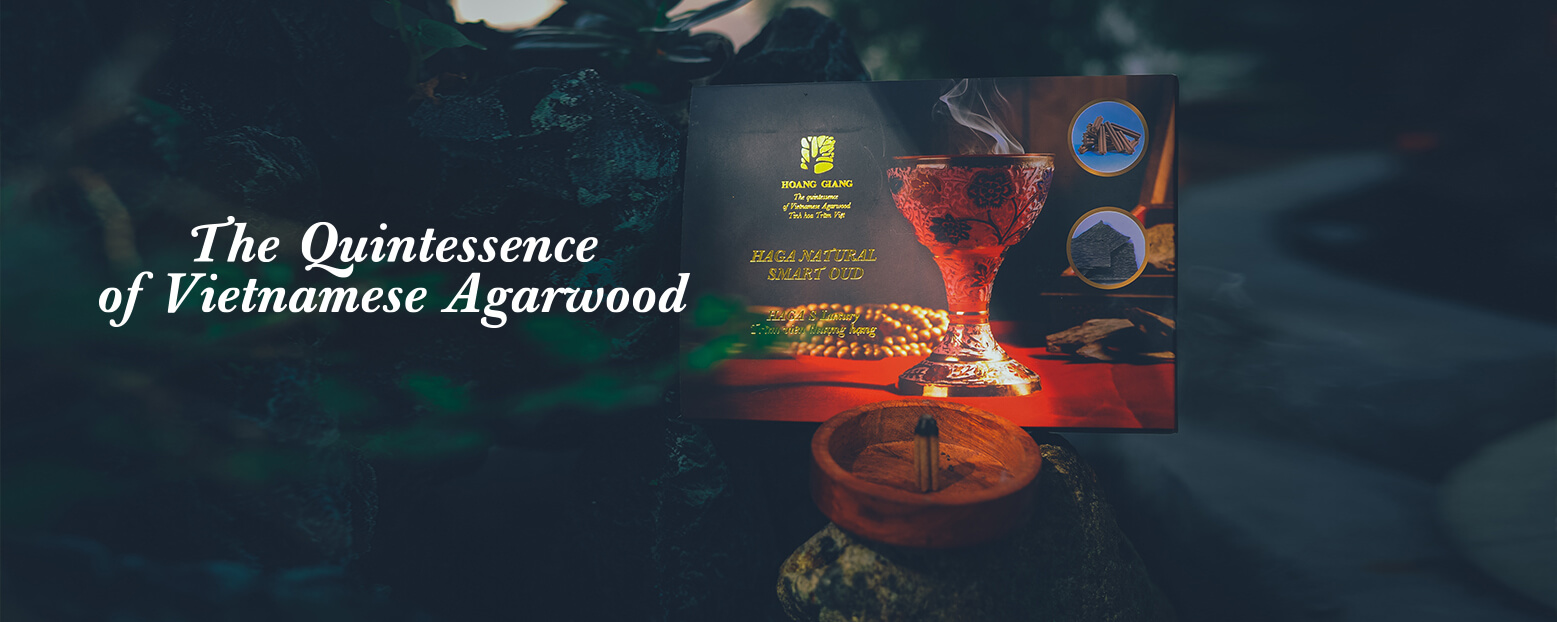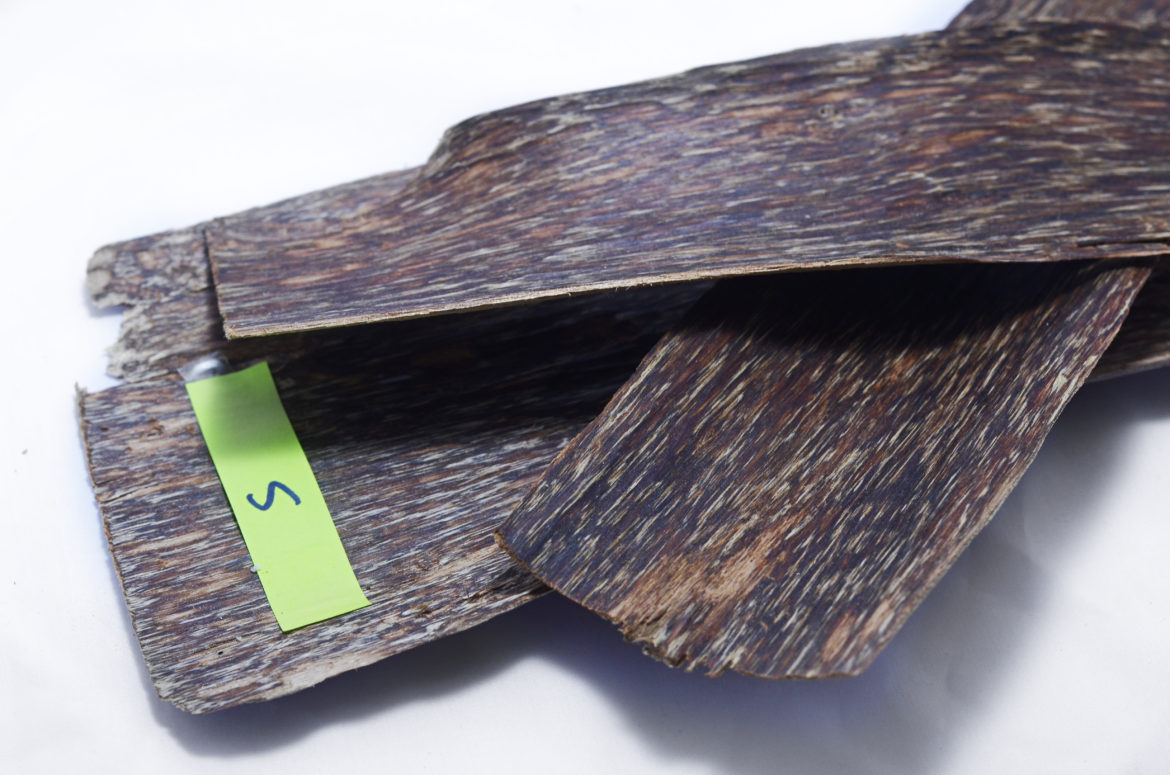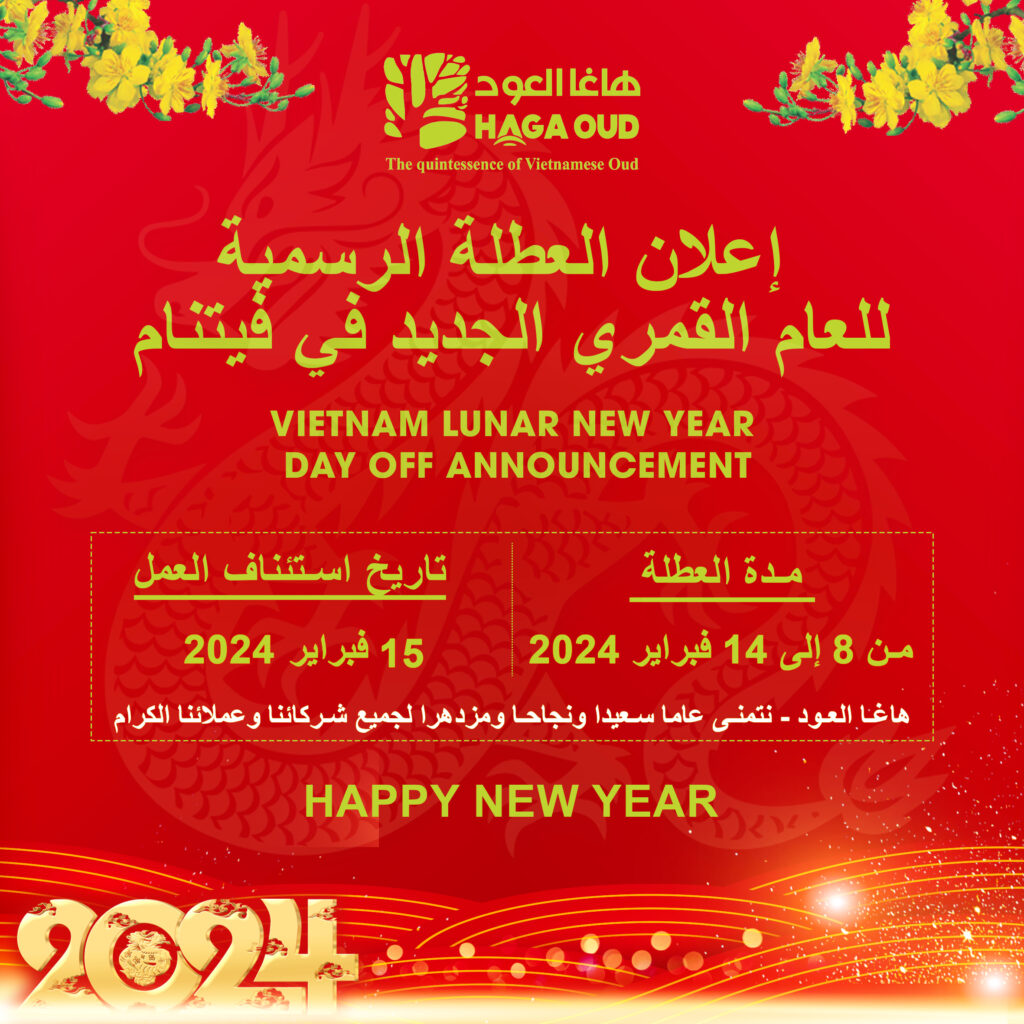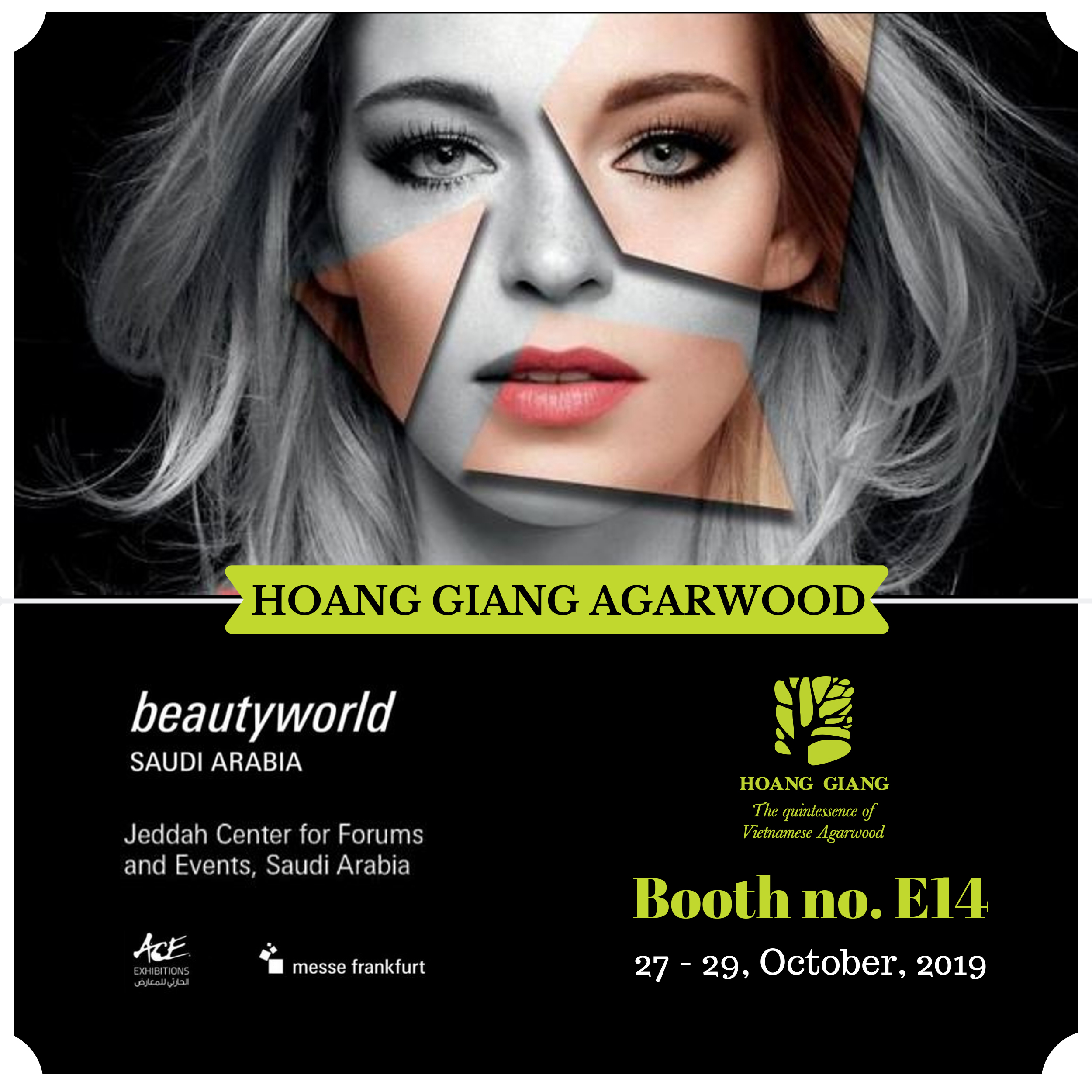Biological Characteristics Of Aquilaria Crassna Pierre (Part 4)
III. Agarwood (Oud) production regime and utilization of Agarwood in Asia

3.1 Agarwood (Oud) production regime
Agarwood (Oud) is understood as resin of Aquilaria crassna Pierre and heart wood infected by resins of Aquilaria crassna Pierre. The Agarwood (Oud) production process is essential oil accumulation in some tree tissues under the influence of natural factor in particular tree mechanisms. This process takes plase for a long time, up to a decade. In other words, the Agarwood (Oud) process is a result of infection process in tissues of Aquilaria crassna Pierre. Wood of Aquilaria crassna Pierre is structurally made of phloem cells concentrated within xelem and responding to external stimuli to establish sequiteipones compounds which are typical fragrance of Aquilaria crassna Pierre.
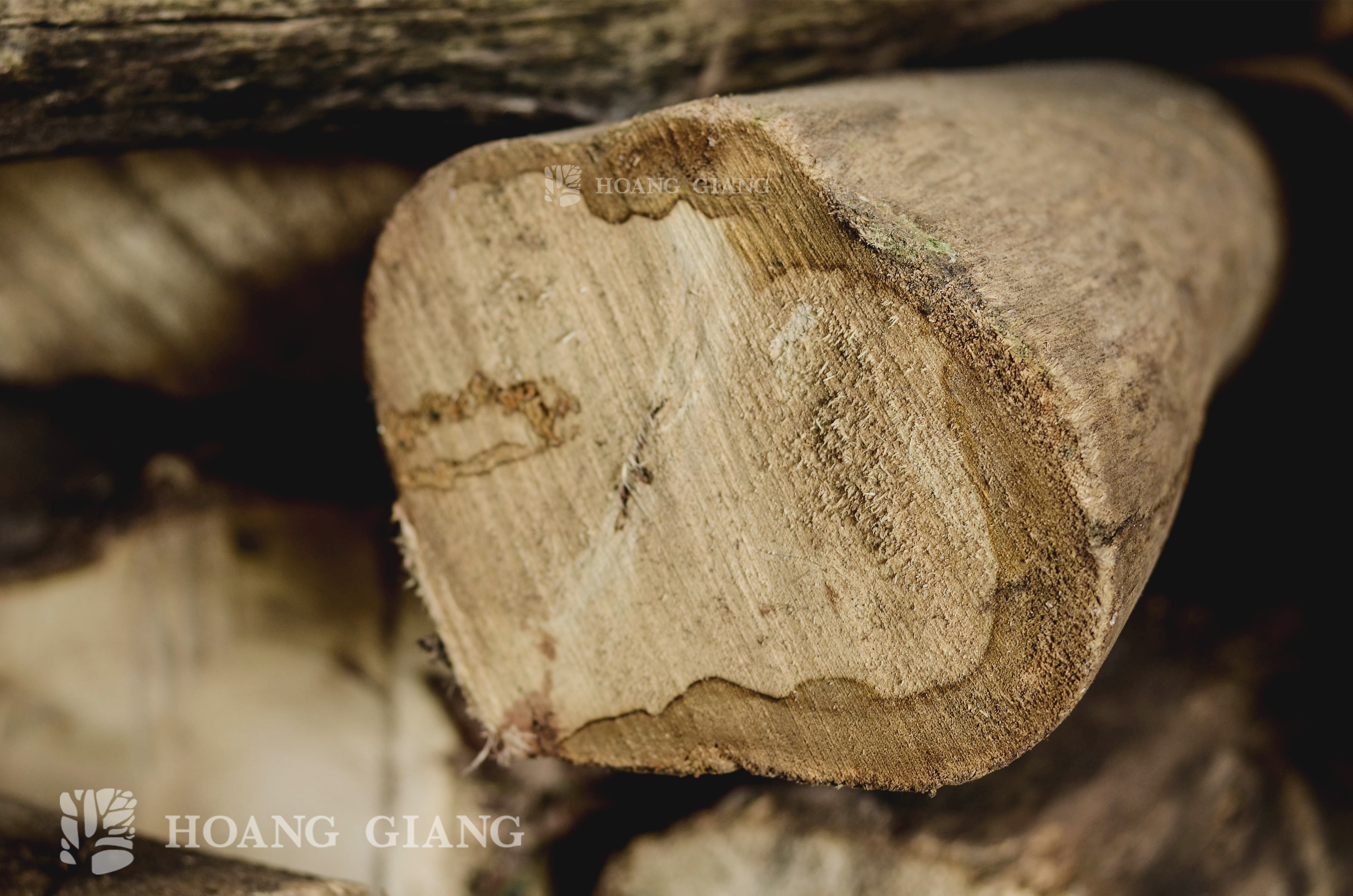
Wood of Aquilaria crassna Pierre is specially structured with phloem cells mixed with wood grains as a good condition for Agarwood (Oud) production. Aquilaria crassna Pierre is able to produce Agarwood (Oud) because of the molecular changes of wood under the influence of a disease (herbal plants in Cambodia, Vietnam, Laos, Alfred Pe’telot, 1954).
Not all trunk sestions of Aquilaria crassna Pierre can produce Agarwood (Oud). Only infected trunks contain Agarwood (Oud) in the trunk core. Around the first-grade Agarwood (Oud), wood is more or less metamorphosed, that is called Tok (which came from Cambodian word). When Tok is burnt, it produces scent. Therefore, it is often used to make incense.
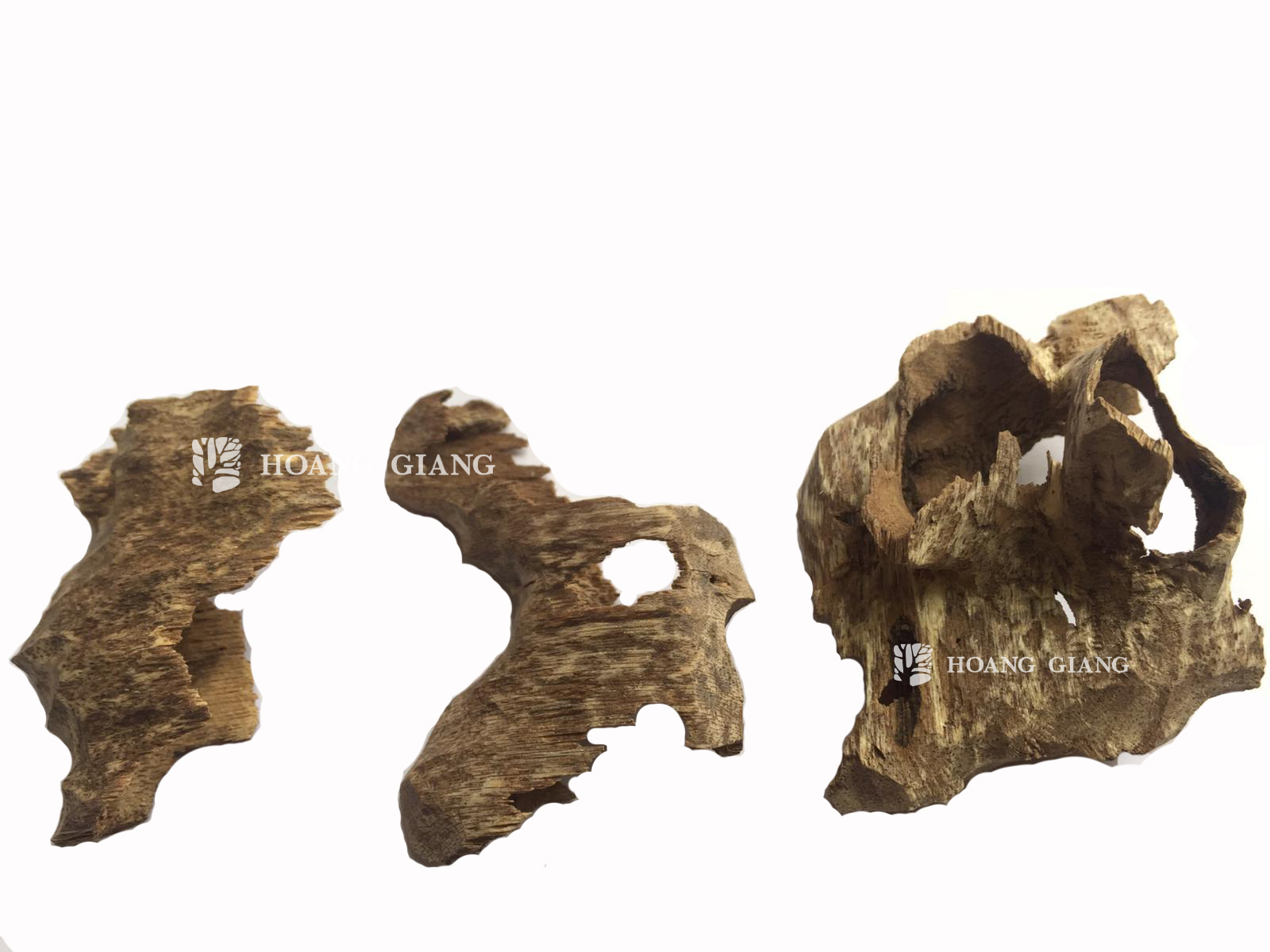
Aquilaria is naturally produced from any parts of the trunk of Aquilaria crassna Pierre, but mostly concentrated in areas close to trunk base and roots. Agarwood (Oud) production varies from a place to a place in terms of sizes, colour, quantity, and fragrance.
In the growth of Aquilaria crassna Pierre, when the tree infected by some unknown factors or infected in some trunk areas, produces resin accumulated over time to protect, resist and then spread out that alters wood molecules with a variety of colours ( black, brown, indigo, gray, etc.), many properties (hard, soft, flexible, brittle, etc.), many scent ( bitter, spicy, sour, sweet, etc.), shapes (circular, spiral, curly, long, etc.), imn multiple locations ( trunks, branches, roots) on that tree. That is Agarwood (Oud).
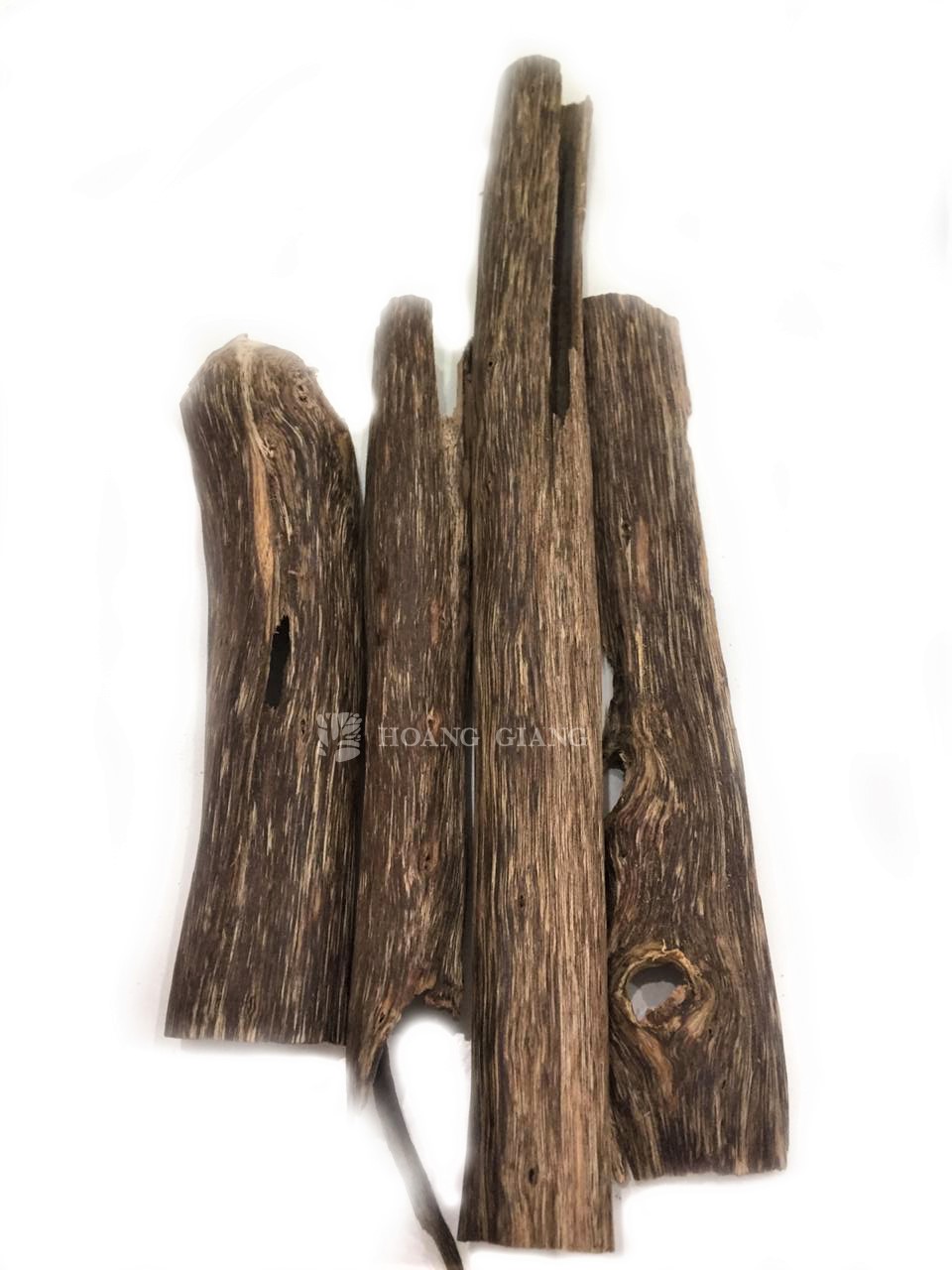
In principle, two elements that assist Aquilaria crassna Pierre in producing Agarwood (Oud) include:
- Strong mechanical injury, such as explosive shrapnel lodged in the trunk or injury caused by human using axes in opening holes in the trunk.
- In injury places, after a long time of 10-15 years, under the influence of many factors and the availability of spores in the natural environment cause infection on injured areas, causing a chemical reaction inside the plant where Agarwood (Oud) is produced. The quality of Agarwood (Oud) depends on levels of infection.

3.2 Historical uses of Agarwood (Oud) in Asia
Agarwood (Oud) has been treated as very rare products for centuries in many civilization in Asia, Egypt and Middle East.
Throughout history, only kings who had power and wealth were capable of using far Agarwood (Oud) or Agarwood (Oud) made products. Until now, Agarwood (Oud) has been widely used. Because being every expensive, Agarwood (Oud) products are treated as a gift.

a, Agarwood (Oud) in China
At the age of ancient China, the rich chose Agarwood to make coffins. In the China’s three Kingdoms, the King Yu Gwan (the most flourishing dynasty at that time) was deposed by wars of power Mr. Cao Cao was the successor. At the request of Guan Yu, the Agarwood coffin was made to bury Guan Yu ( Chapter 77).
In another chapter, to pay respect to the deadth of Zhang Fei, Sun Quan place the head of Zhang Fei in a coffin made of Agarwood (Oud) and sent the Agarwood (Oud) coffin to Liu Bei (Chapter 83).
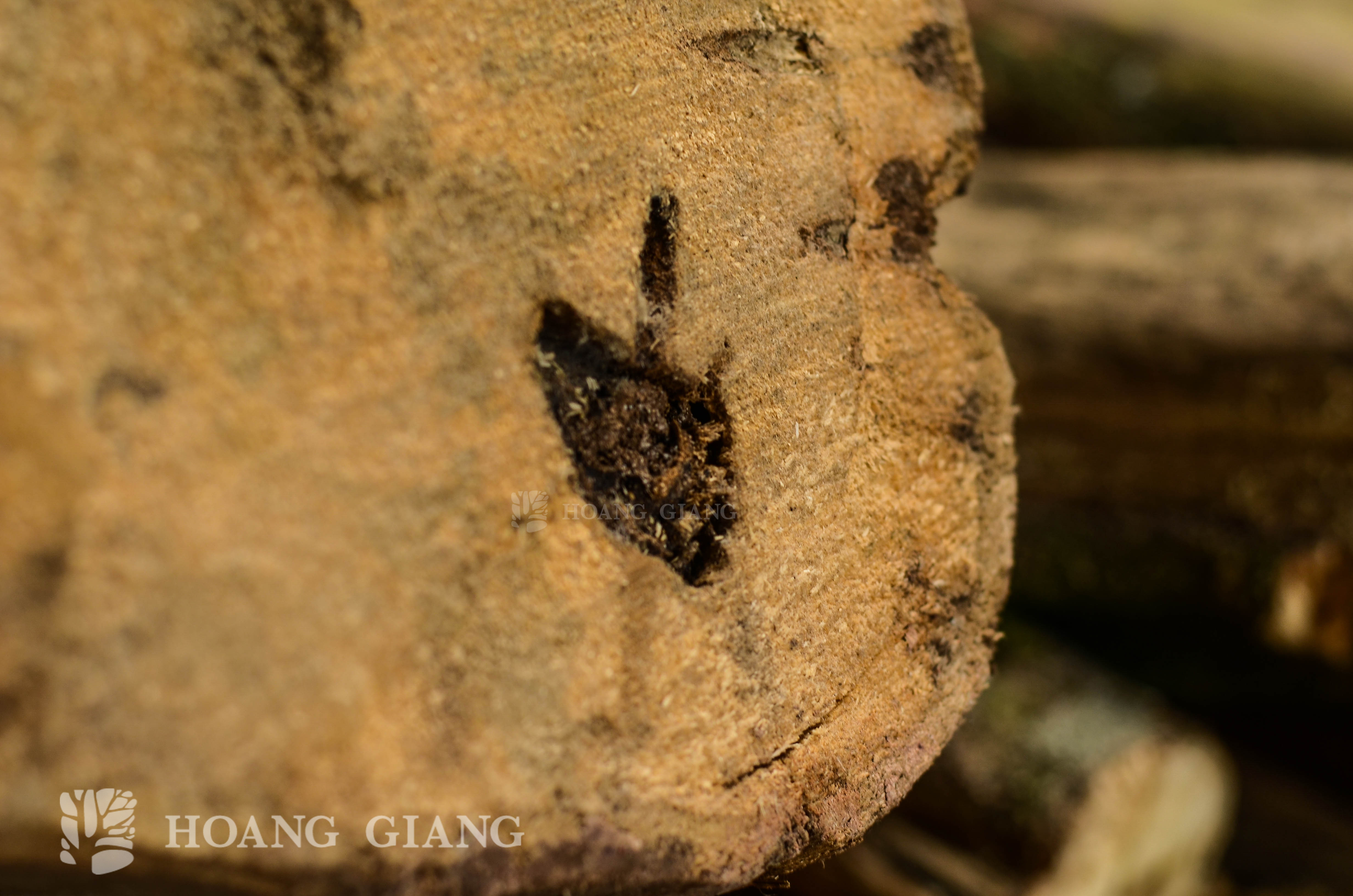
In Buddhism, precious beads of the high ranked Buddhist monks were made of Agarwood (Oud) and a chain was composed of 108 breads. There was a story about the spiritual value of the high ranked Buddhist monks. The high ranked Buddhist monks travelled everywhere in the country. Whenever someone was sick, the high ranked monks used a bread to treat an illness. After Agarwood (Oud) bead was crushed, the ill person recovered by drinking the crushed Agarwood (Oud). Desire by the high ranked Buddhist monks was that they could use up all the beads before they died.
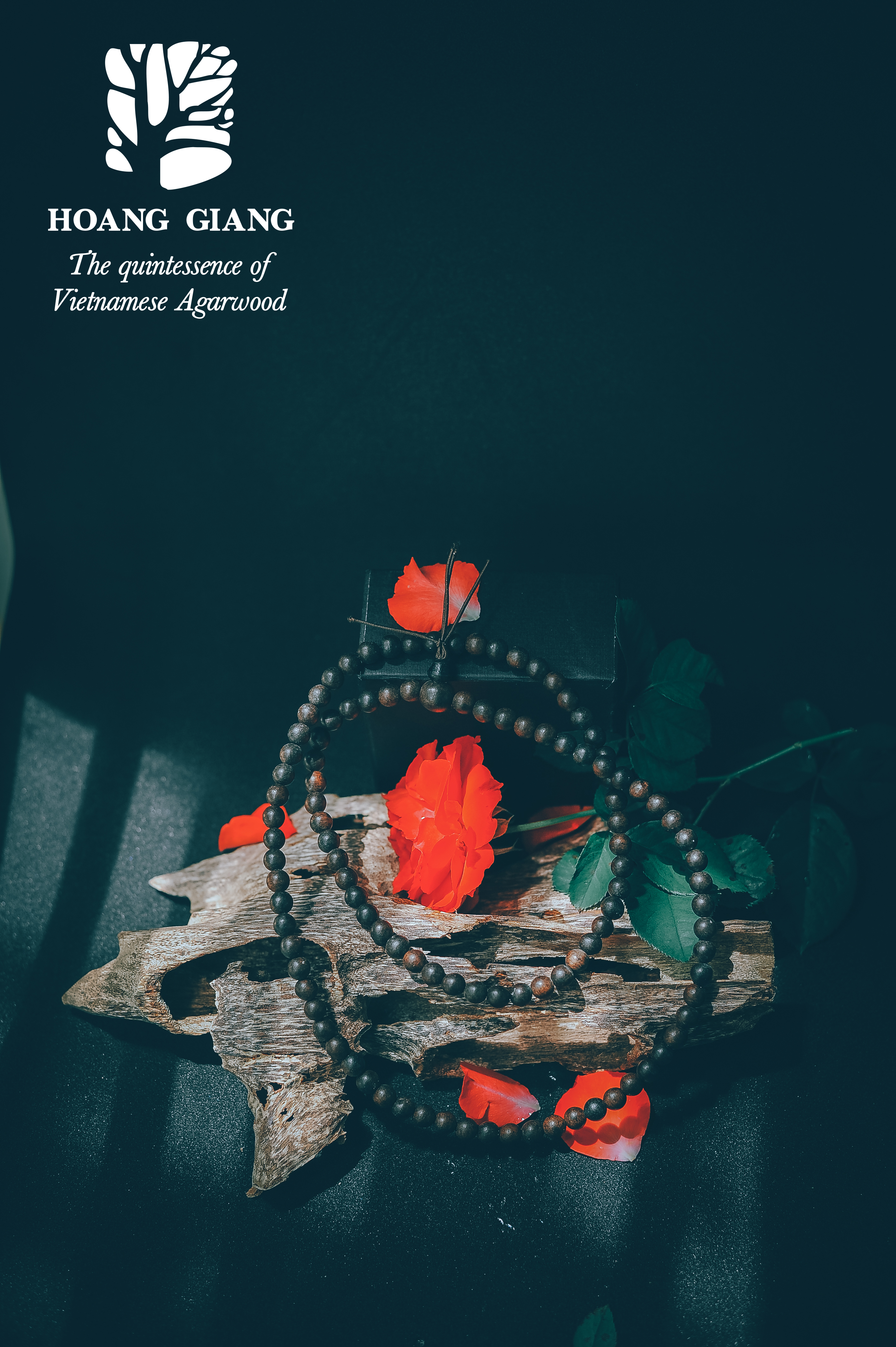
b, Agarwood (Oud) in Korea
Agarwood (Oud) used in medicine: The King Kyryo King Mun-Jong used Agarwood (Oud) in medicine. This king was rheumatism due to old age and he was treated by herbalists in Kyryo. However, the King was increasingly weak because he was ill-treated. Until one day away in a resort, the King asked the Chinese Emperor about traditional herbal plants. The Chinese Emperor Song sent hundreds of traditional herbal plants that were used to treat 88 different diseases. In prescriptions, Agarwood/Oud was top on the list and Agarwood (Oud) was used to treat the illness of the King Mun Jong (vol 9).

Bracelet of the Crown Prince: In 1542 (AD), Crown Prince Joong-Jong lost bracelet made of Agarwood (Oud). But the loss did not concern the Crown Prince because he was certain that people who stole it would offer it to the royal family the Bracelet would come back to him because it was priceless. Exactly, the Bracelet came back to the Crown Prince (Jooong-Jong 36, vol 18, p 442).
Rarity and princeless of Agarwood/Oud: In 1524 (AD), The Prime Minister Jen Kim was seriously ill an insane several time a week. Then a man came with a prescription with the main component being Agarwood (Oud) requested permission to treat the Minister. However, he said that could not purchase Agarwood (Oud) in the markets. After hearing this news, the King Joong-Jong ordered to purchase Agarwood (Oud) to treat the illness of the Prime Minister (Joong-Jong 18, vol 16, p 193).
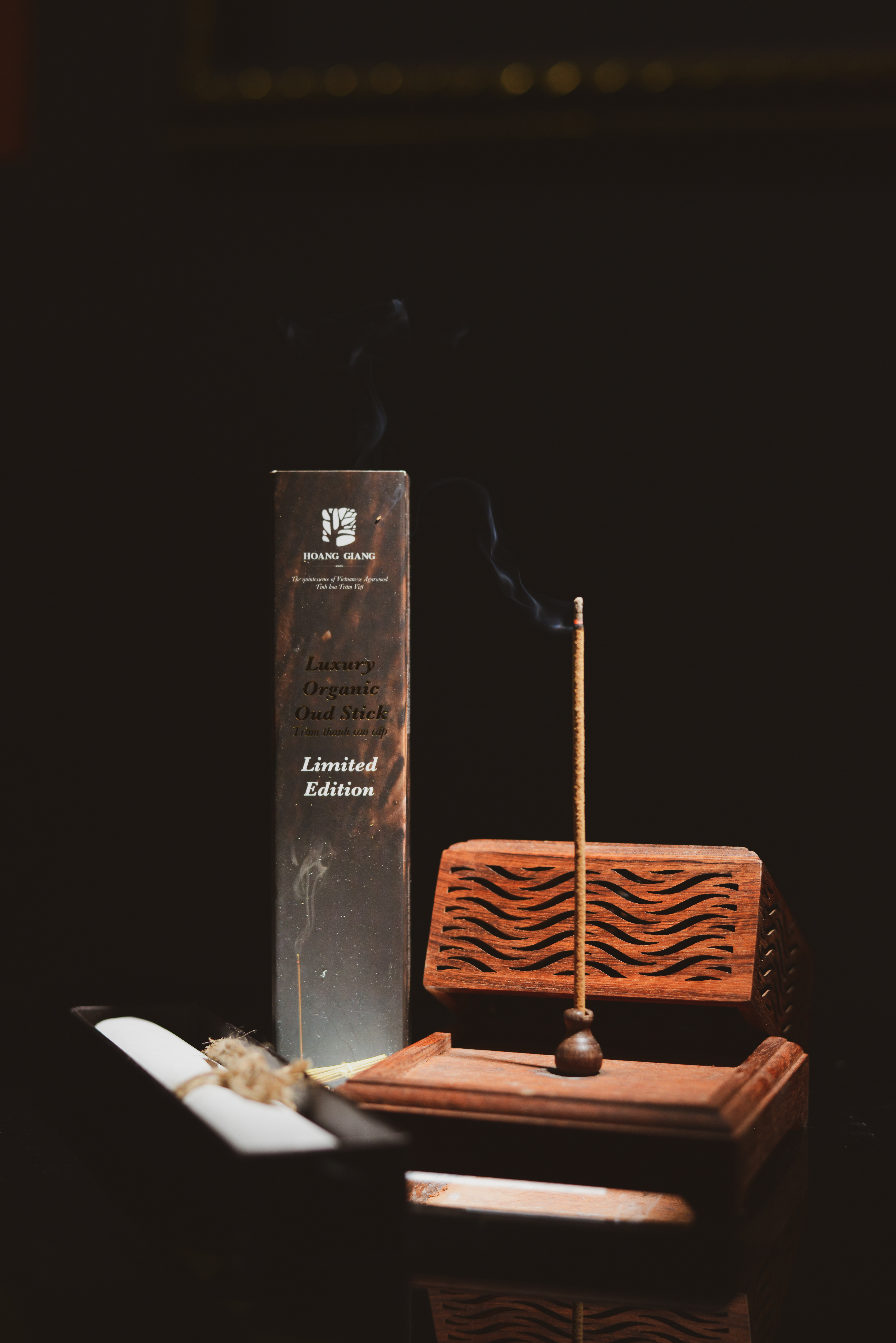
(Hoang Giang Agarwood collect and compile)
Why choose us – choose Hoang Giang Agarwood’s products
- Factory with modern production line from material to final product.
- 100% natural Agarwood (Oud) ingredient.
- All products produced in accordance with ISO 9001: 2015 qualification standards, export qualification, non toxic chemicals.
- TOP 10 Key Players of Agarwood (Oud) essential oil market in the world (Market Research Future 2017).

ISO 9001: 2015 certificated Agarwood (Oud) products, commit to production in accordance of Standard basic announced
On 08.05.2019, Hoang Giang Agarwood Co., Ltd has received an official copy of ISO 9001: 2015 certificate of Directorate for Standards, Metrology and Quality of AQS GLOBAL on product quality management, worldwide recognized for Agarwood (Oud) production and trading.
The ISO 9001: 2015 certificate of Hoang Giang Agarwood is valid for 3 years until April 25, 2022 and is periodically monitored and evaluated to ensure that Hoang Giang’s Agarwood (Oud) product quality always meets the standard certified.
ISO 9001: 2015 certificate assessed by a prestigious international organization is a safe quality assurance for all Agarwood (Oud) products of Hoang Giang, thereby helping customers and partners to feel secure when choosing and believing in Hoang Giang Agarwood (Oud) product in particular as well as Hoang Giang company in general.


LEAVE A REPLY below if you have any interest in making Hoang Giang Ltd. your best supplier. We always offer FREE SAMPLE for our customers.
See our products here
HOANG GIANG AGARWOOD CO., LTD.
Main office & Factory: Nguyen Minh Chau Street, Hiep Cuong Hamlet, Lagi Town, Binh Thuan Province, Vietnam.
Trade office: L40, Street No.11, Him Lam residential area, Tan Hung Ward, District 7, Ho Chi Minh City, Vietnam
Hotline: +84 973 770 639 (available on whatsapp & viber)
Email: info@hgagarwood.com
Website: hgagarwood.com

